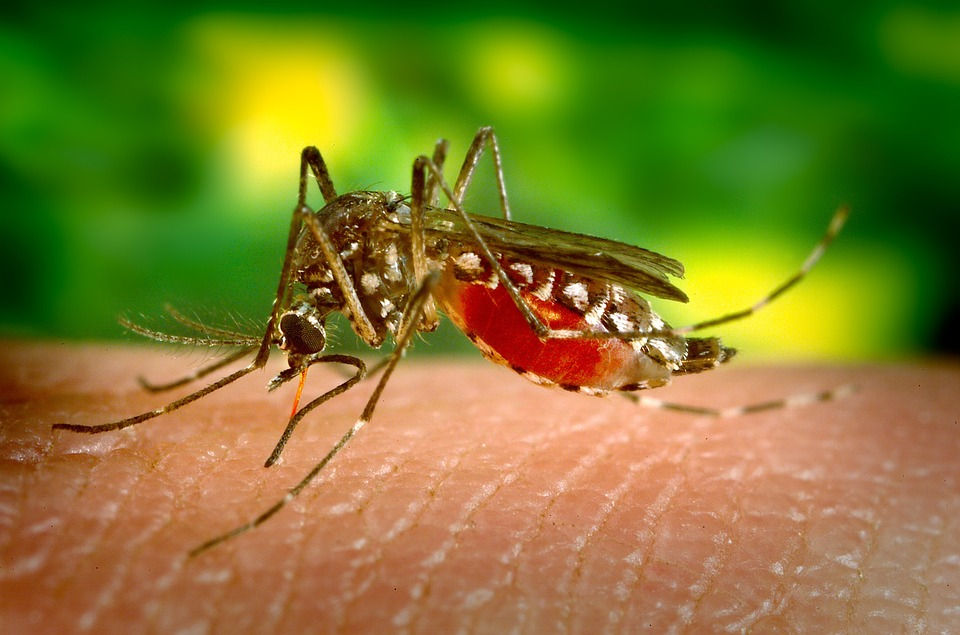The Links Between Climate Change and COVID-19: Will a Warming Planet Bring More Disease?
- Laura Schultz
- Oct 14, 2020
- 4 min read
Updated: Oct 15, 2020
A warming planet in and of itself did not cause the novel coronavirus that is rampaging the world. But scientists have long known that one of the dangers of unabated climate change is the potential for greater spread of infectious disease — many bacteria and viruses thrive in warmer climates. So let’s examine how climate change might have impacted the prevalence of COVID and how worried we need to be about greater spread of infectious disease on a warming planet. As Wisconsin experiences some of the highest rates of COVID-19 contraction in the nation, the question is as relevant to us as ever.

Climate and COVID
To reiterate, there is no suspicion that climate change caused COVID-19. In fact, it doesn't seem like the planet's temperature has much effect at all on the virus — after all, it's been deadly all over the world, no matter the heat or humidity of any given location. Scientists expect cases to increase as the Northern Hemisphere enters winter and the yearly flu season picks up, but climate change isn't a factor there either.
But as climate reporter Sarah Kaplan explains in this Washington Post article, that doesn't mean that climate change and COVID-19 have nothing to do with each other. That's because climate change has an impact on everything on this planet, and viruses are no exception. The most direct link between the spread of the virus and our damaged climate is habitat fragmentation, or the process of turning one large piece of habitat into smaller patches isolated from each other by new stretches of unlike habitat.
A UW–Madison virologist explained to Kaplan that habitat fragmentation is most often caused by human activity, like cutting down forests and poaching wildlife. Doing so means humans are in more frequent contact with animals that may carry disease, especially when these animals are living closer to human habitat than before. Climate change makes these problems worse by forcing animals to migrate, shrinking their populations and genetic diversity, and causing severe weather events that increase disease outbreak.
So, it's theoretically possible that the first human to catch the virus from infected wildlife might not have done so if we were living more sustainably and less carbon-intensively on this planet. But there's no way to know that for certain, of course.
The more tangible links between climate change and the COVID-19 pandemic lie in how we respond to each. While the virus has had a much more immediate impact on human life than the warming planet, they are both massive crises of a global scale — and how we choose to respond to the pandemic could provide a blueprint for managing climate change. As a local doctor put it to me last week when we were talking about the intersection of COVID-19 and environmental progress in Wisconsin: this pandemic is a quiz for our ability to handle a global health crisis. Climate change is the final exam.
Here's a good article for further reading on some of the societal links between COVID-19 and climate change. »
Climate and Disease, Generally

While there's no explicit or obvious link between COVID-19 and climate change, that doesn't mean that future novel diseases won't spread more rapidly on a warming planet. After all, we already know that illnesses that have been around for some time do.
In particular, vector-borne diseases (or diseases transmitted by living organisms such as insects) like malaria or yellow fever (both borne by mosquitos) see a rise in prevalence when temperatures increase — that's why they've traditionally been most common in environments closer to the equator. The link is simple: as more of the planet gets warmer, disease-bearing vectors can spread to newly warmer areas, grow their populations, and infect more humans. Both malaria and yellow fever have been largely eliminated from the United States, but as it warms, it's very much possible we could see a resurgence of both.
But that's not the only way that scientists expect disease to spread further on a warmer planet. While the evidence is less certain, they are beginning to anticipate changes in the relationships between infectious agents, hosts, and the human body, which this Scientific American article explores.
Basically, humans and other mammals have a natural defense against many pathogens. That's our high body temperatures, which are greater than that of our environments. So, if we do catch a disease causing particle, they often can't survive because they're adapted to cooler temperatures. On a warmer planet, though, more of such pathogens are likely to adapt to warmer temperatures and therefore bear a greater chance of surviving our body heat. And, the pathogens that are already more difficult for us to fight off are more likely to be favored in selection under higher average temperatures.
Other fears include the adaptation of potential vectors like cold-blooded lizards to hotter environments and the subsequent spread of lizard-borne viruses to humans; and potentially weakened human immune systems in higher temperatures.
So, Wisconsinites might not be in imminent danger of coming down with a previously uncommon disease because of climate change, but the likelihood will certainly increase as the state gets warmer and more novel diseases emerge. This is just one of the many reasons that climate change is a public health crisis, and not just an environmental one.



Comments